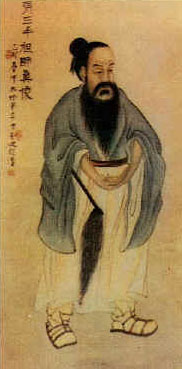I have seen many versions of the Tegatana kata, or walking where the demonstrator raises up higher on his toes as the movement is being executed. While I am sure these students have a strategy they are trying to express, I simply do not understand it. Perhaps it is an expression of my lineage of teachers.
One of the critical principles that have been drilled into me about Aiki motion is - your center must be stable. Carefully watch the shihan. They do not bob up and down with every step while executing technique. Their transverse plane is a still point. The center moves along a plane, without actually having vertical motion.

When doing the kata watch closely your hara, or center. Is it constantly bobbing up and down the transverse plane with every step? Some motions in some groups taught to rise up and float high up on his toes. Especially watch the 8th set, the Uchi Mawashi Gaeshi and 9th set. I do not believe floating your center is the most efficient and effective way to apply Aiki principle. In fact I believe it to be unwise.
"Find motion in stillness and stillness in motion." This is a key phrase in my understanding of the motion we are making. I was taught to imagine standing in pool of water up to my center, a few inches below my naval. As I perform the walking motion my center was to never rise above this point. My center is still and calm, though in motion. No rocking back and forth as feet inefficiently shift weight from one to another. The center should be sliding on a sheet of glass. In fact the center should be heavy and always bearing down towards gravity, the very force that Aiki relies on for life. How can you throw someone down by moving up?
The T'ai Chi Ch'uan Classics say, "someone who has extremely good T'ai Chi Ch'uan kung fu has arms like iron wrapped with cotton and the weight is very heavy. As for the external schools, when they use li, they reveal li. When they don't use li, they are too light and floating. Their chin is external and locked together. The li of the external schools is easily led and moved, and not to be esteemed."

The 9th set of 8 counts is the set known as Soto Mawashi Gaeshi - opposite hand and foot spin. This is the most common motion I see people lifting straight up in the air with their arms and rising up on their tip toes while floating their center. A high level Sensei and I recently had a email discussion about this motion. He said after years he found one use for this motion. One use?!?!?! Does this make the motion part of our principles if it has one use?
I see the walking kata as a system of programing the brain to move in the best possible way for most circumstances. I believe it should teach the rules, not the exceptions. It should demonstrate the solid principles, not technique that is unassociated with the rules and grammar of our style. Either we need to change our understanding so the motion becomes a real tool to help us execute principle or we must change the motion to come in line with the reality of our practice.

So my wrap up is...I believe the center moving smoothly on a plane, ready to load weight is superior to the center bobbing and raising for motions we never use in the application of Aiki technique.







ooh! I've finally found something I'm ahead of Nick on! I have two common interpretations or bunkai or applications for the 'helicopter pivot' (that is the one you're talking about - right?)
ReplyDeleteit can be saving you when you step inside and put the wrong hand up (or get into that weird position however) - you turn behind him in sort of a guruma motion like release #4
or it can be kaiten nage (believe it or not it works great! my students love it. I actually got this one from a tim cartmel book, 'effortless combat throws' or something to that effect. i'll have to get some new video tech and post a video.
true and false -- over all we do minimize the rise and fall by mediating with the bend in our knees-- this creates an illusion of not bobbing -- but toward the end of the walk we see four special conditions in the foot work which are all applicable within the range of effective kuzushi (reminded here of the fact that we use big swinging arm motions in the hand blade forms so as to include all the smaller ranges of motion-- no one could argue that the large motions are what we use in randori but they contain what we use-- in a similar way i think tomiki was being inclusive in in the footwork toward the end of the form ) two of the the special forms were designed to give you the means to break the rules of rise and drop -- normal human motion is invariably rise follows drop follows rise-- in the movment in question we learn to ad a rise to a rise just as in the final window wash we learn to add a drop to a drop -- for the other two -- we hip switch to replace a step with a hip turn and in the final big turn (just before the window wash) we are learning to rotate from closed hip step ( all the predeeding had been open hip actions) -- all useful tools in the tool box if all mostly applicable under special conditions -- any how -- I will be out of touch for a bit -- lookingforward to more when i get back
ReplyDeleteactually quite a lot of places this comes in handy-- bears doing a bit of experimenting
ReplyDelete